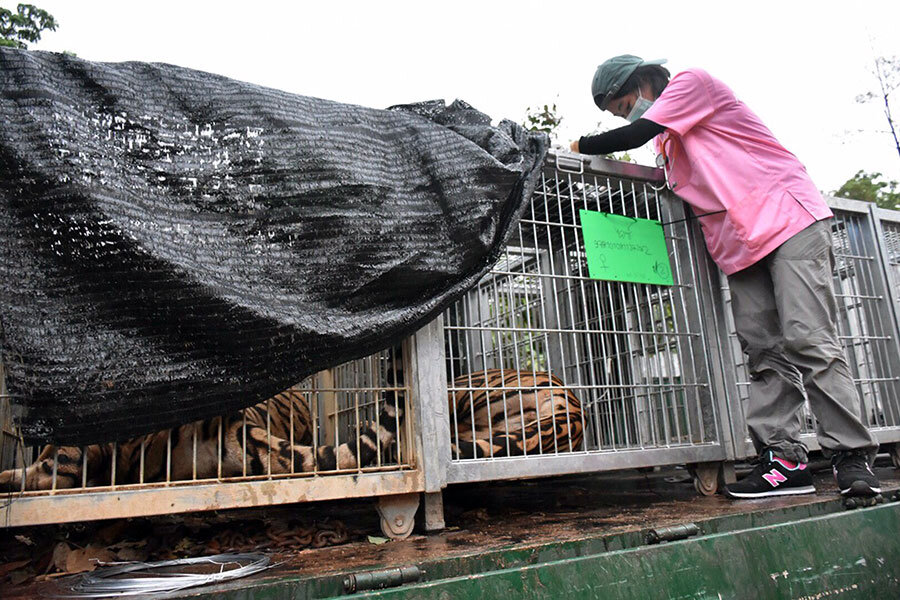Thailand's Buddhist 'Tiger Temple': Prison or sanctuary?
Loading...
Wildlife officials in Thailand say the tigers in the Buddhist “Tiger Temple” have to go.
Roughly a thousand state employees have begun a mission to remove and relocate 137 tigers from a popular tourist attraction west of Bangkok. The site is a Buddhist temple known for allowing visitors and monks making pilgrimages to interact with uncaged tigers.
The crackdown comes in response to increasing global pressure on the Thai government to close down wildlife trafficking operations in their countries and growing suspicions that the Buddhist temple could be involved in animal abuse and trafficking. The government has also tried to remove the tigers in the past, but were blocked by the temple’s abbots.
"We have a court warrant this time, unlike previous times, when we only asked for the temple's cooperation, which did not work," Adisorn Nuchdamrong, deputy director-general of the Department of National Parks, told Reuters. "International pressure concerning illegal wildlife trafficking is also part of why we're acting now."
The chorus of critics who say the temple could be supplying the black market with fresh supplies of exotic animals include People for the Ethical Treatment of Animals, the Thai government, and Thai wildlife conservation officials.
Supporters of the temple and the monks deny the allegations:
"If there's any illegal trading or smuggling, there would have been ... evidence," Supitpong Pakdijarung, managing director of the Tiger Temple Co, told NBC News. "It has been more than a year and the case hasn't gone anywhere."
Christian Science Monitor contributor Tibor Krausz visited the temple in 2006. The abbot of the temple, Venerable Phusit Khantitharo, likewise painted a very different depiction of a tiger sanctuary that grew as a result of Mr. Phusit’s reputation as an animal lover and a necessity to care for abandoned tiger cubs, as Mr. Krausz wrote:
Phusit had by then acquired a reputation locally as a Dr. Doolittle of sorts, treating and feeding a variety of injured wild animals and abandoned pets brought to his care. Thunderstorm's mother had been poached in the lawless jungles near the Thai-Burmese border. A few weeks later, Storm and his twin were brought to the monastery by locals – their mother, too, killed by poachers.
'I didn't know what to do with them, but I couldn't just let them die,' Phusit recalls. Soon another cub was brought, and another. 'Poachers think the bad karma of killing a tigress is cancelled out by saving her cubs.'
Unable to shake rumors of potential animal trafficking and abuse, government officials now plan on removing all tigers from the temple soon.
Officials moved seven tigers on Monday and 33 on Tuesday. Another 97 remain at the temple, until authorities can finalize plans for their removal.
Mr. Nuchdamrong told Reuters the wildlife department plans on moving all of the tigers to state-owned sanctuaries.
This report includes material from Reuters.






